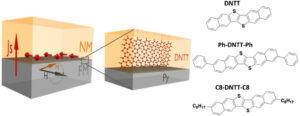 We are very proud to announce that the Young Scientist Award from the European Magnetism Association goes to Libor, "for ground-breaking theoretical predictions of novel spin-splitting mechanisms and antiferromagnetic Hall effect in collinear antiferromagnets, which have ignited the emergent field of topological antiferromagnetic spintronics"
We are very proud to announce that the Young Scientist Award from the European Magnetism Association goes to Libor, "for ground-breaking theoretical predictions of novel spin-splitting mechanisms and antiferromagnetic Hall effect in collinear antiferromagnets, which have ignited the emergent field of topological antiferromagnetic spintronics"
Libor has been in the Mainz INSPIRE team since 2015, where he is now a Research Team Leader. From 2015-2020 he was a PhD student, enrolled in Charles University Czech Republic from which he graduated in 2020. Libor has been a vital part of the INSPIRE group, both intellectually and as a team leader.









